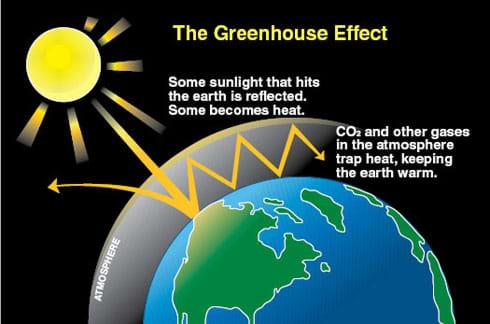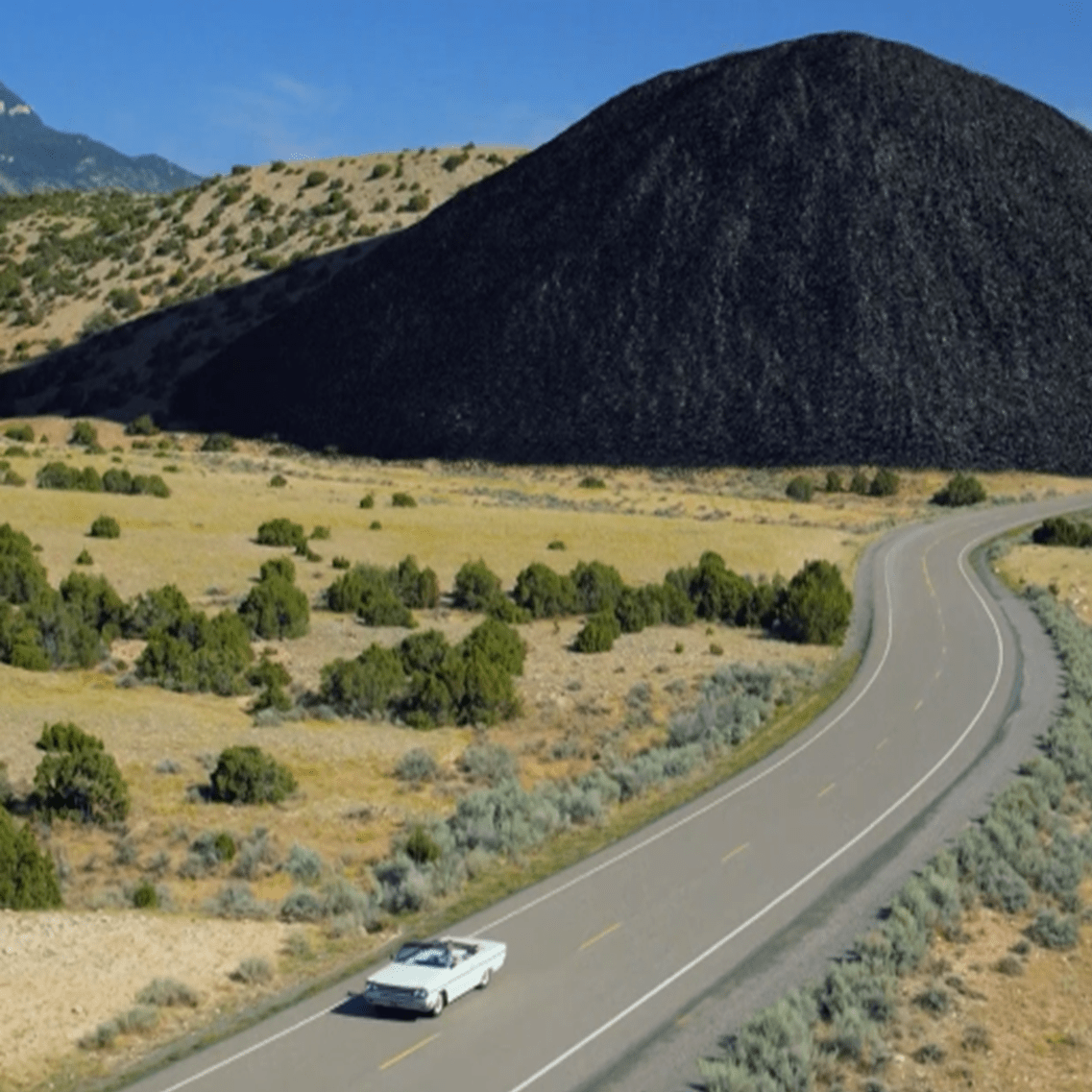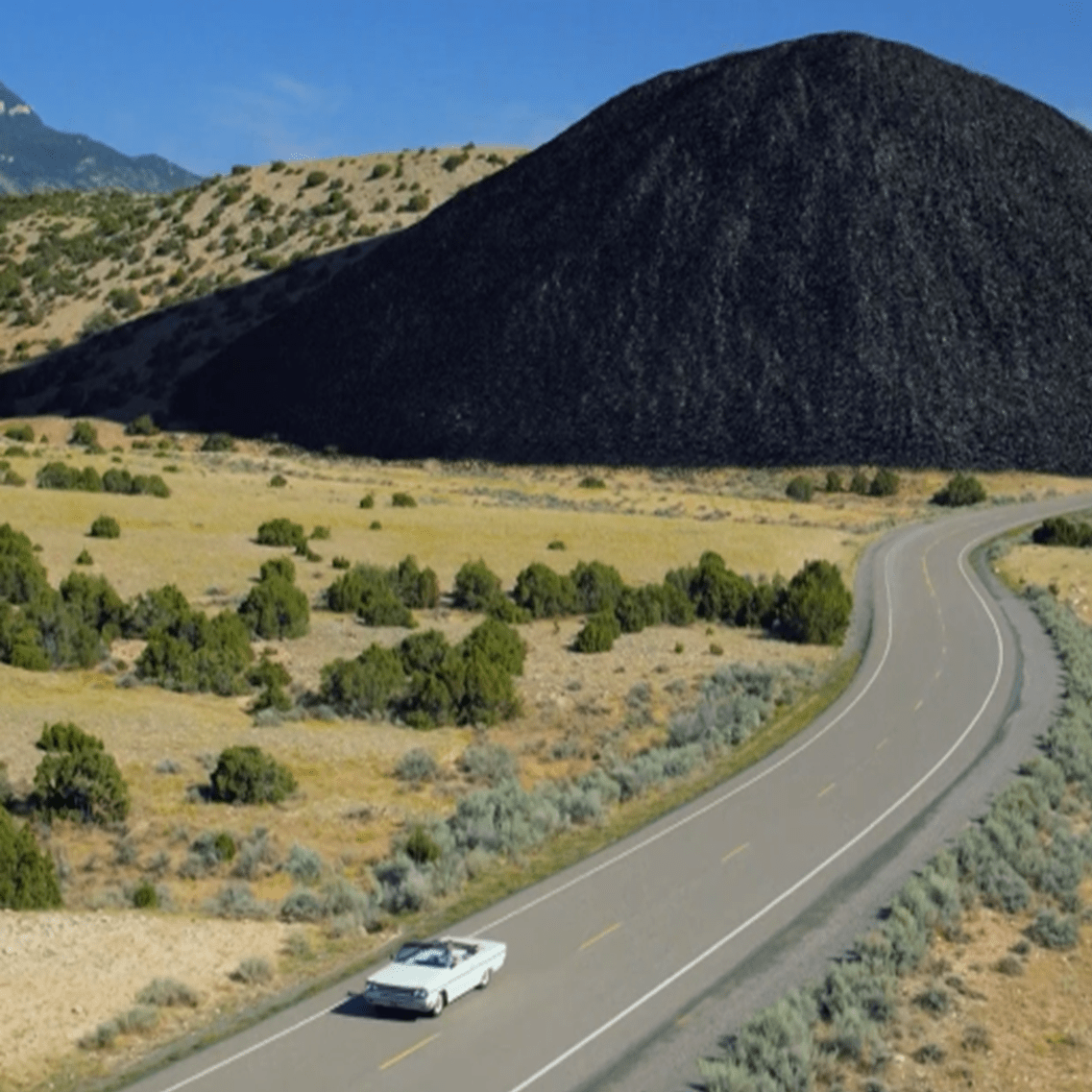Summary
Students determine their carbon footprints by answering questions about their everyday lifestyle choices. Then they engineer plans to reduce them. Students learn about their personal impacts on global climate change and how they can help the environment.
Engineering Connection
Engineers often try to reduce the carbon usage of structures they design. By designing buildings that use less heating and cooling or do not require as much electrical lighting, civil engineers can reduce the carbon footprints of buildings. Environmental engineers evaluate the effects of greenhouse gas emissions and suggest guidelines for other engineers to follow when designing new buildings.
Learning Objectives
After this lesson, students should be able to:
- Define a carbon footprint.
- List several ways to reduce their carbon footprints.
- Describe why it is important to have as small a footprint as possible.
Educational Standards
Each TeachEngineering lesson or activity is correlated to one or more K-12 science,
technology, engineering or math (STEM) educational standards.
All 100,000+ K-12 STEM standards covered in TeachEngineering are collected, maintained and packaged by the Achievement Standards Network (ASN),
a project of D2L (www.achievementstandards.org).
In the ASN, standards are hierarchically structured: first by source; e.g., by state; within source by type; e.g., science or mathematics;
within type by subtype, then by grade, etc.
Each TeachEngineering lesson or activity is correlated to one or more K-12 science, technology, engineering or math (STEM) educational standards.
All 100,000+ K-12 STEM standards covered in TeachEngineering are collected, maintained and packaged by the Achievement Standards Network (ASN), a project of D2L (www.achievementstandards.org).
In the ASN, standards are hierarchically structured: first by source; e.g., by state; within source by type; e.g., science or mathematics; within type by subtype, then by grade, etc.
NGSS: Next Generation Science Standards - Science
| NGSS Performance Expectation | ||
|---|---|---|
|
5-ESS3-1. Obtain and combine information about ways individual communities use science ideas to protect the Earth's resources and environment. (Grade 5) Do you agree with this alignment? |
||
| Click to view other curriculum aligned to this Performance Expectation | ||
| This lesson focuses on the following Three Dimensional Learning aspects of NGSS: | ||
| Science & Engineering Practices | Disciplinary Core Ideas | Crosscutting Concepts |
| Obtain and combine information from books and/or other reliable media to explain phenomena or solutions to a design problem. Alignment agreement: | Human activities in agriculture, industry, and everyday life have had major effects on the land, vegetation, streams, ocean, air, and even outer space. But individuals and communities are doing things to help protect Earth's resources and environments. Alignment agreement: | A system can be described in terms of its components and their interactions. Alignment agreement: Science findings are limited to questions that can be answered with empirical evidence.Alignment agreement: |
| NGSS Performance Expectation | ||
|---|---|---|
|
MS-ESS3-5. Ask questions to clarify evidence of the factors that have caused the rise in global temperatures over the past century. (Grades 6 - 8) Do you agree with this alignment? |
||
| Click to view other curriculum aligned to this Performance Expectation | ||
| This lesson focuses on the following Three Dimensional Learning aspects of NGSS: | ||
| Science & Engineering Practices | Disciplinary Core Ideas | Crosscutting Concepts |
| Ask questions to identify and clarify evidence of an argument. Alignment agreement: | Human activities, such as the release of greenhouse gases from burning fossil fuels, are major factors in the current rise in Earth's mean surface temperature (global warming). Reducing the level of climate change and reducing human vulnerability to whatever climate changes do occur depend on the understanding of climate science, engineering capabilities, and other kinds of knowledge, such as understanding of human behavior and on applying that knowledge wisely in decisions and activities. Alignment agreement: | Stability might be disturbed either by sudden events or gradual changes that accumulate over time. Alignment agreement: |
International Technology and Engineering Educators Association - Technology
-
Students will develop an understanding of the effects of technology on the environment.
(Grades
K -
12)
More Details
Do you agree with this alignment?
-
The management of waste produced by technological systems is an important societal issue.
(Grades
6 -
8)
More Details
Do you agree with this alignment?
-
Analyze how the creation and use of technologies consumes renewable and non-renewable resources and creates waste.
(Grades
6 -
8)
More Details
Do you agree with this alignment?
Worksheets and Attachments
Visit [www.teachengineering.org/lessons/view/cub_footprint_lesson1] to print or download.Introduction/Motivation
(In advance, make copies of the attached Carbon Footprint Worksheet, one per student.)

(Begin by asking students to try to define the words provided in the Assessment section.)
What is the greenhouse effect? (Listen to student ideas.) Greenhouse gases exist in the atmosphere surrounding the Earth and keep it warm. (Draw on the board the diagram in Figure 1.) This diagram shows the path of energy. The sun gives off energy that is absorbed by the Earth. This is how our planet gets heat. Some of this heat is radiated back to space, meaning it leaves the Earth and goes out to space. When this heat travels back to space, it must pass through the Earth's atmosphere. Gases in the atmosphere absorb some of this heat, keeping the air around us warm. We call this effect the greenhouse effect and these gases are called greenhouse gases because they act like the glass roof of a greenhouse. We need these gases in the atmosphere or our planet would become too cold for us to live on. At the same time, if too many of these gases accumulate in the atmosphere, then not enough heat can escape and our planet gets too warm.
The Earth is the perfect temperature for humans to live on. If the planet gets too hot or too cold then we will not be able to survive. Some human activities produce greenhouse gases. While it is important that we have some greenhouse gases in the atmosphere, too many can be a bad thing. When the level of greenhouse gases gets too high, climate change occurs. This can lead to more storms such as hurricanes and snowstorms and can limit our ability to grow crops for food. Scientists have created a term for the amount of extra greenhouse gases that people put in the air: a carbon footprint.
Each of you has a carbon footprint. Your carbon footprint is the amount of greenhouse gases that are emitted in the air because of your activities. Many activities contribute to your carbon footprint such as heating your house, how you get to school, and how much trash you throw away. Some activities emit greenhouse gases directly, such as the gas from the tail pipe of the car or bus you take to school. For other activities the greenhouse gases were emitted elsewhere, such as at the factory where your TV was made or at the power plant where the power for your lights is generated.
Today, we will do a life cycle assessment to determine your carbon footprints. This means that we are looking not just at the emissions you can see, but also the emissions that may occur far from you such as the emissions at a power plant or a factory making products you use.

How can you reduce your emissions? Well, if you recycle your newspaper, instead of creating greenhouse gases as your newspaper decomposes, the paper is being used again instead of cutting down more trees, which remove greenhouse gases from the air. Engineers are working on ways to reduce the emissions of greenhouse gases to return them to their previous levels.
It is important to reduce your carbon footprint so that the levels of greenhouse gases in the atmosphere return to their natural levels. The natural levels of greenhouse gases keep the climate at a level that is healthy and safe for people. To avoid natural disasters or extreme temperatures, which can hurt people, we must keep the level of greenhouse gases at their natural levels. This means it is important to reduce human sources of greenhouse gases as much as possible.
Today, you are each going to answer some questions about your lifestyle to help you calculate your carbon footprint. Then you will engineer plans to reduce your carbon footprints. (Hand out one worksheet to each student.) Students can then illustrate their understanding of the green house effect with the hands-on associated activity It's Really Heating Up in Here! They observe what happens and discuss the implications of global warming theory for engineers, themselves and the Earth.
Lesson Background and Concepts for Teachers
Greenhouse gases include carbon dioxide, methane, water vapor, ozone and nitrous oxide. These gases are naturally occurring, but human actions have caused their levels to increase beyond the background level. An increase in these gases can have effects on the Earth's climate that can cause harm and death due to extreme heat or cold, natural disasters such as hurricanes, and changes in water availability and crop yields. Rising sea levels due to melting ice can also destroy animal and human habitats on Earth. Scientists and engineers refer to these changes as "climate change" because they can cause extreme heat or cold and affect long-term weather patterns. Weather refers to short-term events, such as today's temperature and whether it is raining or sunny. Climate refers to long-term events such as a decade of colder-than-average winters or warmer-than-average summers or the average spring rainfall in a region.
Some greenhouse gases stay in the atmosphere longer than others. For example, water vapor is a greenhouse gas, but it is removed from the air every time it rains and only stays in the air for about a week. On the other hand, methane stays in the air for hundreds of years so emitting even a little bit extra methane can have an effect for a long time, causing a much larger effect for the same volume of gas. Greenhouse gases are usually reported in pounds of CO2 equivalent per year. "CO2 equivalent" means the amount of a greenhouse gas that would have the equivalent warming effect of a pound of CO2.
The attached worksheet gives a good idea of the approximate level of greenhouse gas that is saved or emitted due to certain choices made. It is not a comprehensive list of all the emissions created by each person. The sources for the values used in the worksheet are provided in the References section. The information, often from "carbon calculators, was combined to create a student-friendly, printable worksheet that gives students a better idea of their impact on climate change.
Associated Activities
- It's Really Heating Up in Here! - Using modeling clay, ice chunks, water, plastic wrap and aluminum pie tins, student teams model the greenhouse effect. They observe what happens and discuss the implications of global warming theory for engineers, themselves and the Earth.
Lesson Closure
How do the activities on the worksheet add greenhouse gases to the atmosphere? Operating a car or bus emits exhaust, which includes greenhouse gases and other pollutants. When you have more people in the car or bus, the amount of pollution per person is less, that's why carpooling or taking the bus reduces your carbon footprint. Fast food is more processed, requiring large factories and long-distance transportation, which generates more emissions. Meat and dairy produce more emissions because animals emit methane, a greenhouse gas, as part of the digestive process. Grains have slightly higher emissions than fruits and vegetables because they require more processing. Recycling reduces emissions because recycled materials are not emitting greenhouse gases as they decompose or are burned, and recycling takes less energy than obtaining new raw materials, which reduces emissions as well, and can save some trees from being destroyed for more paper pulp. Turning off lights, TVs, game systems, unplugging appliances, and not running clothes dryers all reduce the use of electricity. Since generating electricity also generates greenhouse gases in most cases, this reduces your carbon footprint. Turning off water when brushing your teeth also saves the electricity needed to heat and treat water.
Engineers are always trying to reduce the carbon footprint of their designs. This applies to all the products that use electricity or require energy to produce. They might also do this by designing houses so they do not require as much energy for heating or cooling, or so that they require fewer electric lights. For example, it is smart to design and place houses so that they have lots of south-facing windows. This way, in the winter when a house is cold and the sun is to the south, the sunlight warms up the house naturally, requiring less energy to heat it. Those windows also let in sunlight so that fewer lights are required in the daytime.
Now that you have calculated your carbon footprint, what are some ways that you can reduce it? (Listen to student suggestions, refer to the ideas from the worksheet.) Do you think you can try some of these methods this week?
Vocabulary/Definitions
carbon dioxide: A greenhouse gas that comes from burning fossil fuels.
carbon footprint: The amount of greenhouse gas emissions caused by a person or group.
climate: The long-term weather events of a region, such as its average rainfall or its average high/low temperatures.
emission: Gases released into the atmosphere.
greenhouse gas: Gases that trap heat in the Earth's atmosphere: carbon dioxide, methane, water vapor, ozone, and nitrous oxide.
life cycle assessment: A consideration of all effects of an activity, including producing and transporting goods, not just the effects directly associated with an activity, such as emissions from a car tailpipe.
methane: A very strong greenhouse gas; a component of natural gas.
nitrous oxide: A very strong greenhouse gas; also causes other air pollution and regulates ozone.
ozone: A greenhouse gas that also protects humans from UV rays.
water vapor: The tiny droplets of water in the air caused by evaporation; can act as a greenhouse gas.
weather: The short-term events such as a current rainstorm or temperature.
Assessment
Pre-Lesson Assessment
Warm-up: Ask students if they can define the following terms: greenhouse gas, carbon footprint, climate change, emission.
Questions: Have students come up with questions to ask eachother about global warming (i.e., what factors have caused the rise in global temperatures over the past century?). After the lesson, have students answer the questions.
Post-Introduction Assessment
Worksheet: Have students complete the attached Carbon Footprint Worksheet. Review their answers to gauge their comprehension of the subject. Are students able to accurately identify the ways they create or reduce emissions? Are they able to identify possible areas of improvement? Review with students exactly how the activities on the worksheet add greenhouse gases to the atmosphere, as described in the Lesson Closure section.
Post-Lesson Assessment
Engineering Design: Ask students to define a carbon footprint. Ask them to create individual designs for the next week that help to reduce their carbon footprints. Assign students to: Write an engineering design for your week that includes ways to reduce your carbon footprint. (Check back with students in a week and ask if they have implemented their intended changes.)
Lesson Extension Activities
Conduct the associated activity, It's Really Heating Up in Here!
On their own, have students learn more by exploring the EPA's Climate Change website (https://www.epa.gov/sites/production/files/signpost/cc.html) to find pictures, questions and answers, and videos. Enough information exists on this website that you could assign students to each explore it and write small reports about some aspect of climate change. Students can also "take a climate change expedition," in which they watch videos and answer questions. If they finish the expedition, they can print a certificate to use as proof of activity completion.
Have students explore changes that they and their families can make at the Energy Star Kids website (https://www.energystar.gov/index.cfm?c=kids.kids_index), which has information on electricity geared towards lowering carbon footprints. It describes more-efficient appliances, electricity sources, and how kids can reduce energy usage in their rooms.
Subscribe
Get the inside scoop on all things TeachEngineering such as new site features, curriculum updates, video releases, and more by signing up for our newsletter!More Curriculum Like This

Students learn the concepts of climate change and how cars can contribute to climate change. Students learn the basics of the greenhouse effect and the carbon cycle. They also learn how transportation affects our atmosphere. Students work together to understand how various forms of transportation ha...

Students learn about climate change and what affects it. Students learn a basic understanding of the greenhouse effect, the carbon cycle, global warming, and how transportation can contribute to global warming. Students work together to understand how various forms of transportation have costs and b...

Students are introduced to the concept of energy cycles by learning about the carbon cycle. They learn how carbon atoms travel through the geological (ancient) carbon cycle and the biological/physical carbon cycle.

Students are introduced to the concepts of air pollution, air quality, and climate change. The three lesson parts (including the associated activities) focus on the prerequisites for understanding air pollution. First, students use M&M® candies to create pie graphs that express their understanding o...
References
Calculator. Eat Low Carbon. Accessed March 11, 2012. http://www.eatlowcarbon.org/
Calculator, A Student's Guide to Global Climate Change. US Environmental Protection Agency. Accessed March 11, 2012. http://epa.gov/climatechange/kids/calc/index.html#calc=instructions
Clean Energy. Last updated February 5, 2012. US Environmental Protection Agency. Accessed March 11, 2012. (includes link to greenhouse gas equivalencies calculator and other resources to measure your environmental impact) http://www.epa.gov/cleanenergy/index.html
Household Emissions Calculator, Greenhouse Gas Emissions, Climate Change. US Environmental Protection Agency. Accessed March 11, 2012. http://www.epa.gov/climatechange/emissions/ind_calculator.html
Copyright
© 2011 by Regents of the University of Colorado.Contributors
Kristen BrownSupporting Program
Integrated Teaching and Learning Program, College of Engineering, University of Colorado BoulderAcknowledgements
The contents of these digital library curricula were developed by the Integrated Teaching and Learning Program under National Science Foundation GK-12 grant no. 0338326. However, these contents do not necessarily represent the policies of the National Science Foundation, and you should not assume endorsement by the federal government.
Last modified: August 16, 2024










User Comments & Tips